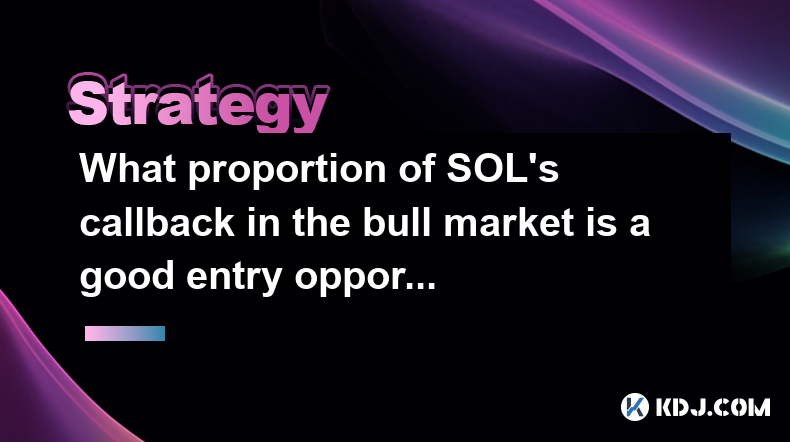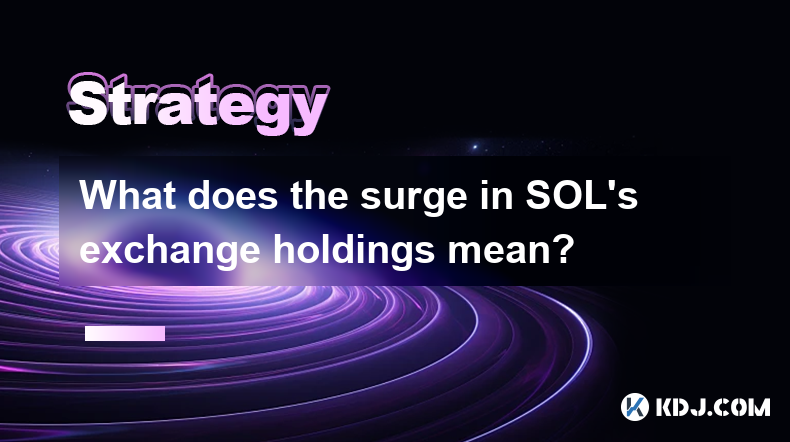-
 Bitcoin
Bitcoin $88,555.6766
1.18% -
 Ethereum
Ethereum $1,626.4043
-1.22% -
 Tether USDt
Tether USDt $0.9998
-0.01% -
 XRP
XRP $2.1018
-1.27% -
 BNB
BNB $605.8750
0.04% -
 Solana
Solana $140.3422
0.04% -
 USDC
USDC $0.9999
0.00% -
 Dogecoin
Dogecoin $0.1643
1.27% -
 TRON
TRON $0.2481
1.05% -
 Cardano
Cardano $0.6359
-1.63% -
 Chainlink
Chainlink $13.3216
-2.53% -
 UNUS SED LEO
UNUS SED LEO $9.1797
-2.79% -
 Avalanche
Avalanche $20.3681
-2.52% -
 Stellar
Stellar $0.2473
-4.43% -
 Sui
Sui $2.3043
2.50% -
 Shiba Inu
Shiba Inu $0.0...01257
-1.15% -
 Toncoin
Toncoin $2.9429
-3.48% -
 Hedera
Hedera $0.1738
0.16% -
 Bitcoin Cash
Bitcoin Cash $347.0587
1.49% -
 Hyperliquid
Hyperliquid $18.2576
-0.35% -
 Litecoin
Litecoin $79.8456
-0.89% -
 Polkadot
Polkadot $3.7809
-4.73% -
 Dai
Dai $0.9999
-0.01% -
 Bitget Token
Bitget Token $4.4439
-0.50% -
 Ethena USDe
Ethena USDe $0.9991
-0.01% -
 Pi
Pi $0.6313
-0.96% -
 Monero
Monero $216.2035
0.57% -
 Pepe
Pepe $0.0...08138
3.46% -
 Uniswap
Uniswap $5.3889
-1.68% -
 OKB
OKB $50.9281
-0.23%
Use machine learning to assist Ethereum transaction decisions
Machine learning enables Ethereum users to optimize transaction fees, enhance security, estimate liquidity, develop trading strategies, and efficiently navigate the network through data analysis and advanced AI techniques.
Feb 25, 2025 at 06:43 pm

Key Points:
- Understanding the concept of Machine Learning (ML) and its potential impact on Ethereum transactions
- Exploring various applications of ML in Ethereum transaction decision-making
- Identifying tools and resources for leveraging ML in Ethereum transaction optimization
- Addressing the challenges and limitations of using ML for Ethereum transaction decisions
Machine Learning for Ethereum Transaction Decisions
Machine learning (ML) is an advanced field of artificial intelligence (AI) that allows computers to learn from vast amounts of data without explicit programming. This capability makes ML a valuable tool for optimizing Ethereum transaction decisions by leveraging historical data, transaction patterns, and market dynamics.
Applications of ML in Ethereum Transaction Decision-Making
- Transaction Fee Optimization: ML models can analyze the Ethereum network's congestion levels, gas prices, and transaction history to determine the optimal gas price for a given transaction. By understanding these factors, users can minimize transaction fees while ensuring timely execution.
- Transaction Routing: ML algorithms can evaluate different nodes and paths within the Ethereum network to identify the most efficient route for a transaction. This reduces the likelihood of congestion and transaction delays.
- Fraud Detection: ML models can be trained on historical transaction data to detect anomalous behavior, such as money laundering or fraudulent transactions. This enhances the security of Ethereum transactions by identifying suspicious patterns and alerting users.
- Liquidity Estimation: ML techniques can estimate the liquidity available for a particular token or pair of tokens on decentralized exchanges (DEXs). This information helps users make informed decisions about the timing and size of their transactions to minimize slippage.
- Trading Strategy Development: ML models can analyze market data, including price trends, order book activity, and sentiment analysis, to generate trading strategies for Ethereum transactions. This enables users to automate their trading decisions and optimize their returns.
Tools and Resources
- Ethereum Historical Data Providers: Services like Etherscan and Blockchair provide historical Ethereum transaction data that can be used for ML model training and analysis.
- Gas Price Estimators: Tools like Blocknative's Gas Estimator and Etherscan's Gas Tracker offer real-time gas price estimates based on network congestion and past transactions.
- ML Libraries for Ethereum: Frameworks like Tensorflow, PyTorch, and scikit-learn provide building blocks for creating ML models for Ethereum transaction decision-making.
- Node Monitoring Services: Services like Infura and Alchemy provide comprehensive monitoring of Ethereum nodes, enabling users to track network performance and adjust their transaction strategies accordingly.
Challenges and Limitations
- Data Availability and Quality: Training effective ML models requires access to large and reliable historical data. However, obtaining high-quality Ethereum transaction data can be challenging.
- Model Complexity and Interpretability: ML models for Ethereum transactions can be complex, making it difficult to understand their inner workings and ensure their accuracy.
- Data Bias: ML models can inherit biases from the data they are trained on, which may lead to inaccurate or unfair transaction decisions.
- Regulatory Uncertainty: The regulatory landscape for ML in finance is still evolving, creating uncertainty for users regarding the legal implications of using ML for Ethereum transactions.
FAQs
Q: What are the benefits of using ML for Ethereum transaction decisions?
A: ML enhances Ethereum transaction decisions by optimizing gas prices, routing transactions efficiently, detecting fraud, estimating liquidity, and developing trading strategies.
Q: Which tools and resources are available for leveraging ML in Ethereum transactions?
A: Developers and users can access historical data providers, gas price estimators, ML libraries, and node monitoring services to implement ML solutions for Ethereum transactions.
Q: What challenges are associated with using ML for Ethereum transactions?
A: Data availability, model complexity, data bias, and regulatory uncertainty pose challenges to the effective use of ML for Ethereum transaction optimization.
Disclaimer:info@kdj.com
The information provided is not trading advice. kdj.com does not assume any responsibility for any investments made based on the information provided in this article. Cryptocurrencies are highly volatile and it is highly recommended that you invest with caution after thorough research!
If you believe that the content used on this website infringes your copyright, please contact us immediately (info@kdj.com) and we will delete it promptly.
- U.S. Digital Asset Firms Are Reportedly Considering Applying for Bank Charters and Licenses
- 2025-04-22 15:40:12
- OM Slides Deeper as Massive Token Burn Falls Flat
- 2025-04-22 15:40:12
- Ethereum Crashes, Its Share of the Overall Virtual Asset Market Fell Below 7%
- 2025-04-22 15:35:12
- Dogecoin Community Celebrates Dogeday 4/20, Buoyed by ETF Filing Buzz
- 2025-04-22 15:35:12
- ZetaChain Integrates Arbitrum to Offer Streamlined Universal App Usage
- 2025-04-22 15:30:12
- Deutsche Bank and Standard Chartered Are Expanding Their Crypto Operations in the United States
- 2025-04-22 15:30:12
Related knowledge

How to use trading volume to determine the buying and selling timing of BCH?
Apr 22,2025 at 04:14pm
Trading volume is a critical indicator that traders use to gauge the strength and direction of market trends, and it can be particularly useful when determining the buying and selling timing of Bitcoin Cash (BCH). By analyzing the trading volume, investors can gain insights into the market sentiment and make more informed decisions about when to enter o...

What proportion of SOL's callback in the bull market is a good entry opportunity?
Apr 22,2025 at 03:43pm
The question of what proportion of SOL's callback in a bull market represents a good entry opportunity is a nuanced one, requiring a deep dive into market dynamics, historical data, and risk management strategies. Let's explore this topic in detail. Understanding SOL and Bull MarketsSolana (SOL) is a high-performance blockchain platform known for its fa...

Can BCH's Willy indicator be bottomed out in the oversold area?
Apr 22,2025 at 02:56pm
Understanding the Willy IndicatorThe Willy indicator, also known as the Willy ratio, is a technical analysis tool used in the cryptocurrency market to assess the potential for a price reversal. It is calculated by dividing the current price of a cryptocurrency by its 200-day moving average. When the Willy indicator falls into the oversold area, it sugge...

What does the surge in SOL's exchange holdings mean?
Apr 22,2025 at 04:07pm
The recent surge in SOL's exchange holdings has sparked considerable interest and debate within the cryptocurrency community. SOL, the native token of the Solana blockchain, has seen a notable increase in the amount of tokens held on various cryptocurrency exchanges. This phenomenon can have several implications for the token's price, market sentiment, ...

What to do if SHIB's HODL wave indicator shows loose chips?
Apr 21,2025 at 03:07pm
If the SHIB's HODL wave indicator shows loose chips, it suggests that a significant portion of the SHIB holders are selling their tokens, potentially leading to increased volatility and a possible price drop. Understanding how to navigate this situation is crucial for any SHIB investor. This article will guide you through the steps to take when you noti...

Is it a risk that SHIB's derivatives position is 3 times that of the spot?
Apr 20,2025 at 12:35am
Is it a risk that SHIB's derivatives position is 3 times that of the spot? The cryptocurrency market is known for its volatility and high-risk nature, and Shiba Inu (SHIB) is no exception. One of the metrics that traders and investors closely monitor is the ratio of derivatives to spot positions. SHIB's derivatives position being three times that of the...

How to use trading volume to determine the buying and selling timing of BCH?
Apr 22,2025 at 04:14pm
Trading volume is a critical indicator that traders use to gauge the strength and direction of market trends, and it can be particularly useful when determining the buying and selling timing of Bitcoin Cash (BCH). By analyzing the trading volume, investors can gain insights into the market sentiment and make more informed decisions about when to enter o...

What proportion of SOL's callback in the bull market is a good entry opportunity?
Apr 22,2025 at 03:43pm
The question of what proportion of SOL's callback in a bull market represents a good entry opportunity is a nuanced one, requiring a deep dive into market dynamics, historical data, and risk management strategies. Let's explore this topic in detail. Understanding SOL and Bull MarketsSolana (SOL) is a high-performance blockchain platform known for its fa...

Can BCH's Willy indicator be bottomed out in the oversold area?
Apr 22,2025 at 02:56pm
Understanding the Willy IndicatorThe Willy indicator, also known as the Willy ratio, is a technical analysis tool used in the cryptocurrency market to assess the potential for a price reversal. It is calculated by dividing the current price of a cryptocurrency by its 200-day moving average. When the Willy indicator falls into the oversold area, it sugge...

What does the surge in SOL's exchange holdings mean?
Apr 22,2025 at 04:07pm
The recent surge in SOL's exchange holdings has sparked considerable interest and debate within the cryptocurrency community. SOL, the native token of the Solana blockchain, has seen a notable increase in the amount of tokens held on various cryptocurrency exchanges. This phenomenon can have several implications for the token's price, market sentiment, ...

What to do if SHIB's HODL wave indicator shows loose chips?
Apr 21,2025 at 03:07pm
If the SHIB's HODL wave indicator shows loose chips, it suggests that a significant portion of the SHIB holders are selling their tokens, potentially leading to increased volatility and a possible price drop. Understanding how to navigate this situation is crucial for any SHIB investor. This article will guide you through the steps to take when you noti...

Is it a risk that SHIB's derivatives position is 3 times that of the spot?
Apr 20,2025 at 12:35am
Is it a risk that SHIB's derivatives position is 3 times that of the spot? The cryptocurrency market is known for its volatility and high-risk nature, and Shiba Inu (SHIB) is no exception. One of the metrics that traders and investors closely monitor is the ratio of derivatives to spot positions. SHIB's derivatives position being three times that of the...
See all articles























































































